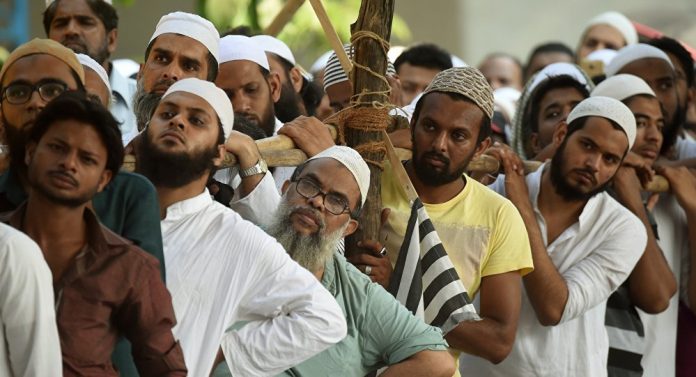Syed Ali Mujtaba
An audit report on the marginalization of Muslims in minority concentration districts in Bihar, West Bengal, Assam, and UP tears apart the slogan sab ka sath, sab Vikas and says the equity question of Muslims remains a myth in India.
The audit focused on ten districts that have a significant Muslim population of approximately 14.1 million, representing 52% of the district’s overall population. It was presented at the Press Club of India on April 15, 2023, in New Delhi.
The ten districts on which the report focused are four in Bihar, (Araria, Purnea, Kishanganj, Katihar), two in Assam, (Dhubri, Kokrajhar), two in West Bengal (Malda, Murshidabad), and two in UP, Shravasti and Balrampur.
In these ten districts, there are about 1.4 crore Muslims, or 5% of the total Muslim population in India.
According to the report, the Muslim population in the ten selected districts has been deprived of basic resources and amenities more than other regions of the country.
The report highlighted systematic discrimination against Muslims in the distribution of government schemes. Only 31.20% of the beneficiaries of the Pradhan Mantri Gramin Awaas Yojana (PMGAY) in these districts were Muslims, which is 17.5% less than the Muslim population’s total average.
The report dispels the misconception that Pasmandas (backward) Muslims received a proportionate share in the PMGAY scheme. They received only 31.20% of the allotments in one district which made up 48% of the population and in the rest of the districts, their share was much lower.
The report also revealed that there was a higher demand for work under the Mahatma Gandhi National Rural Employment Guarantee Act (MGNREGA) in these districts than the state average between 2014-15 and 2020-21.
The report highlighted the poor socioeconomic conditions of Muslims in four districts of Bihar. These districts had lower literacy rates than the state average, and the student-teacher ratio in schools was also significantly higher than the state average, indicating inadequate educational infrastructure.
The report revealed the lack of infrastructure facilities in all the districts with a large concentration of Muslim population.
The data further reveals that only 16.8% of women in Balrampur UP have completed ten or more years of schooling. The state average is 39.3%. In the Shravasti district in UP there exists poor health infrastructure, making it the poorest-ranking district in Uttar Pradesh.
The report discredits the myth of population explosion among Muslims in two districts of Uttar Pradesh. In Shravasti, the decadal population growth (DPG) was 5.02% in 2001-11 which represents a decline of 32.23% from the previous decade. In Balrampur, the DPG increased marginally compared to other districts. The literacy level in both districts was lower than the state average, with Balrampur at 49.51% and Shravasti at 37.89%, compared to the state average of 57.25%.
The report reveals that the situation is similar in the two districts of Assam. Kokrajhar has witnessed a decline in the number of functional lower primary schools, while Dhubri and Kokrajhar both have poor infrastructure and healthcare facilities.
In West Bengal, the report indicates that the decadal population growth in both Malda and Murshidabad, where Muslims make up 51% and 66% of the population, was negative. The report also highlights the poor state of education and health infrastructure in these districts of West Bengal.
SPECT Foundation is a nonprofit organization that has carried out a development audit in ten districts to highlight the socio-economic status of Muslims in India. It intends to carry out a similar exercise in all 90 districts of the country as recommended in the Sachar Commission report of 2006.
————–
Syed Ali Mujtaba is a journalist. He can be contacted at [email protected]


